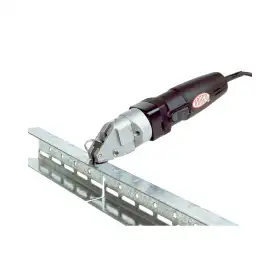


The hand seamer tool is essential for anyone involved in rain gutter installation. This tool allows for precise bending and shaping of metal, ensuring that
The hand seamer tool is essential for anyone involved in rain gutter installation. This tool allows for precise bending and shaping of metal, ensuring that gutters fit perfectly and function effectively. Understanding its usage can significantly impact the quality of the installation process.
Aside from the hand seamer, there are several other key tools involved in a successful rain gutter installation. From measuring tools to cutters, each plays a vital role in the overall efficiency and effectiveness of the project. Mastering these tools can lead to a more durable and aesthetically pleasing result.
Whether tackling a DIY project or working in a professional capacity, knowing how to use a hand seamer and other rain gutter installation tools .
The hand seamer tool is essential for various roofing applications, particularly in metalworking for rain gutter installations. Its effectiveness lies in its design and functionality, allowing for precise bending, shaping, and seam sealing.
Hand seamers come in multiple varieties, each tailored for specific tasks. The two primary types are:
Key features to consider include:
Using a hand seamer effectively requires specific techniques. First, ensure the material is clean and free of debris before starting.
Practicing on scrap metal improves skill and reduces errors during actual installations.
Proper maintenance enhances the lifespan of a hand seamer. Here are key practices:
Routine checks for wear and tear can help in identifying any issues before they escalate, promoting safe use and efficiency.
Installing rain gutters requires specific tools for efficiency and precision. Knowing which tools to use and how to utilize them correctly is vital for a successful installation.
Having the right tools is crucial for installing rain gutters effectively. The essential tools include:
Gathering these tools before starting helps streamline the process and reduces delays.
Proper installation techniques contribute to the longevity and functionality of the gutters. First, clear the installation area of debris. Next, measure and mark where the gutters will be placed, ensuring a slight slope toward downspouts for optimal drainage.
Attach brackets to secure the gutters. Using the power drill, make pilot holes for screws, then fasten each bracket firmly. If custom bends or seams are needed, the hand seamer is ideal for creating precise fittings. Make sure to install the downspouts, ensuring they direct water away from the foundation.
Safety is paramount when installing rain gutters. Always use a sturdy ladder and ensure it’s on level ground to prevent tipping. It’s advisable to have a second person on hand to stabilize the ladder during work.
When handling metal, wear safety gloves to protect against sharp edges. Use safety goggles when drilling or cutting to shield the eyes from debris. Additionally, check weather conditions before beginning installation to avoid slippery surfaces.
